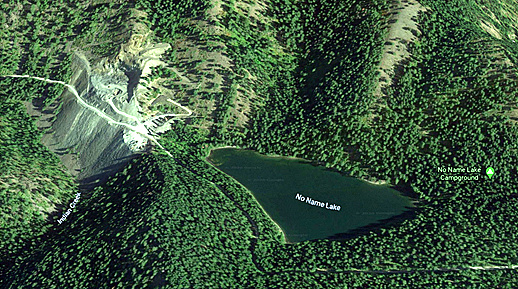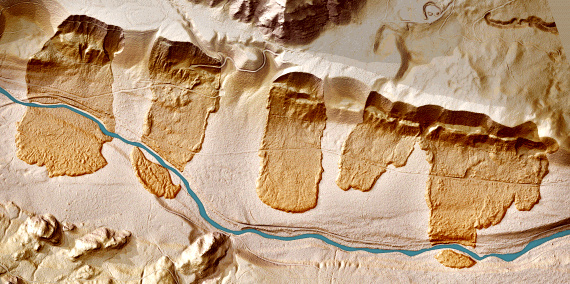Mapping What's Hidden
Olympic mountains LiDAR map (credit: WDNR)
LiDAR (Light imaging, Detection and Ranging) produces maps of hidden landscapes never before been seen. The uncovered landscapes are remarkable in their detail. The technology uses a specialized laser to scan back and forth across a given field of view to produce a visual image.
The applications of LiDAR are limited only by the imagination but have so far included investigations for: geography, geology, archeology, forestry, geomorphology, seismology, and underwater locations. Researchers with the Washington Department of Natural Resources used LiDAR to uncover historical landslides across the State's mountains. The details of past slides, with their forest cover removed, are stunningly clear. According to an announcement,
"Washington is one of the most landslide-prone states in the US, with hundreds to thousands of events each year. The direct costs of landslide damages includes roads, building repairs, and loss of life. Indirect costs add loss of property value and tax revenue, and environmental effects degrading water quality that can exceed direct costs."
LiDAR has the unique ability to expose physical structures hidden underneath vegetation. Part of the laser's light penetrates the vegetation and returns to the sensor which can be filtered off the general scanning data, thereby providing a map of raw land beneath the trees. A high school student could easily see the differences in maps showing what was hidden under these Washington forests. WHB


Washington State forests (credit: Google Earth) Olympic mountains, LiDAR Map (credit: WDNR)